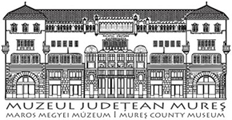Marisia - Maros Megyei Múzeum Évkönyve 29/3. (2009)
Rezi Botond, Nagy József-Gábor: Rescue Excavations at Chinari "Mociar" (Mureş County)
100 REZl BOTOND, Nagy józsef-Gábor XVII/No. 81; XVIII/No. 87, 88), with slightly incurved bevelled rim, well-defined upper part of the body, conical lower body (Fig. XVII/No. 78; XVIII/No. 89). The deep bowls are represented by fifteen pottery fragments and we have to types: slightly curved body, rounded and incurved rim (Fig. XVI/No. 67-69, 76), curved body, short neck, rounded and outcurved rim (Fig. XV/ No. 62; XVI/No. 71-75). The shallow bowls have curved body, conical shape, outcurved rim, and flat base (Fig. XV/No. 55, 58-60) or ring base (Fig. XV/No. 57, 61). The globular vessels have a spherical body and cylindrical neck, we don’t have any rim fragments, presumably they were outcurved (Fig. XIV/No. 50-54). The mugs are the least represented type of vessels (Fig. XIX/No. 94-97), there have been established only one fragment certainly belonging to a mug that had a broken high handle (Fig. XIX/No. 94). At Chinari “Mociar” we discovered six fragmentary miniature vessels, which imitates the forms and types of normal size vessels: bowls (Fig. XIX/98, 99), bitronconic vessels (Fig. XIX/10012) and vessels with high neck and curved body (Fig. XIX/10113, 10214 and 103). The miniature vessels were considered toys or ritual recipients15. Along with the pottery fragments mentioned above there were discovered other burned clay objects that can also be attributed to the Early Iron Age (weights, animal figurines). The conical shape weights (Fig. XXII/140) are more common and were discovered in different sites16. The zoomorphic statuettes are represented by two stylized specimen (Fig. XXII/141, 142), with the essential characteristic of domestic animals, probably a ram and a dog. Same statuettes can be found in all the area of Gáva culture, being a specific element of this culture17. Decoration Types Half of the analysed pottery had been decorated, mainly with channelling, followed by incisions, knobs and rarely barbotine. Only three pot fragments are decorated with incision and one with incisions on the lip (Fig. IX/9, 10). The roughening of the surface with organized vertical barbotine can be noticed on two vessel fragments (Fig. XXI/127, 128). This type of decoration has analogies in the settlements from Mure? County at Iernut “Gorotar”18, in Alba County at Me?creac19, Simeria “ín coastä”20, Sebe?21, Oarda “Bulza I”22, Alba Iulia “Str. 12 Patay 1976, 197, Abb. 3/4. 13 Patay 1976, 197, Abb. 3/2. 14 László 1994, 84, 265, fig. 45, nr. 1. 15 Vasiliev et alii 1991, 92. 16 Teleac (Vasiliev et alii 1991, 61, 221 fig. 25, nr. 9-10); Media? (Zaharia 1965, 94); Porumbenii Mari (Székely 1966, 34); Gränice?ti (László 1994, 64, 231, tig. 11). 17 Poroszló-Aponhát (Patay 1976, 197, Abb. 3/7-9); Lechinta de Mure? (Horedt 1963, 527-534, fig. 2/1-11); Teleac (Vasiliev et alii 1991, 145, 223, fig. 27, 224, fig. 28, nr. 1-8); Reci (Székely 1966, pl. VII/6); Gránice?ti (László 1994, 90, 266-269, fig. 46-49). 18 Vlassa 1970, 174, fig. 8, nr. 4 ?i 6; Lazár 1995, PL. LXXII, nr. 4, 6. 19 Ciugudean 1979, 68, 73, fig. 6, nr. 1. 20 Dated to the end of Bronze Age beginning of early Iron Age (Ha Ab Andritoiu 1976, 396, nr. 5), mark the presence of Susani type discoveries in the middle basin of the Mure? River (Andritoiu 1996, 224; Rustoiu 1997, 22); M Gumä dates the Susani group in the second half of Ha A! and the first part of Ha A2 (Gumä 1993, 170). 21 Horedt 1967 et alii, 22, fig. 9, nr. 4. 22 Rustoiu 2000, 173, pl. II, nr. 3; at approximately 200-250 m from this point on the same terrace at Oarda Bulza II, there have been discovered pottery fragments belonging to the Teleac - Media? II phase (Ha B2-Ha B3).
